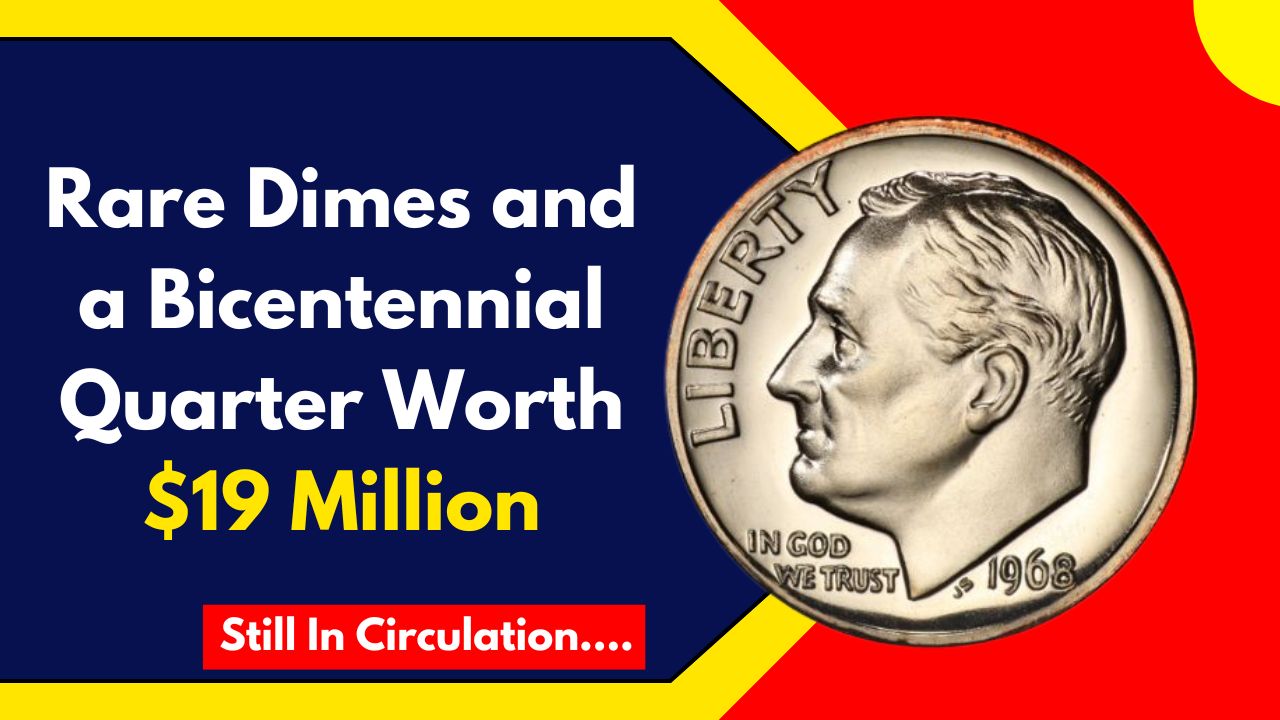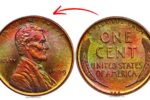Rare Dimes and a Bicentennial Quarter Worth $19 Million : In the world of coin collecting, some rare coins hold incredible value, turning ordinary pocket change into life-changing treasures. Among these, two exceptionally rare dimes and a Bicentennial quarter have drawn significant attention, with a combined worth of up to $19 million. This article explores these unique coins, their distinguishing features, and how to identify them in your own collection.
The 1975 No-S Roosevelt Dime
One of the most valuable modern coins is the 1975 No-S proof Roosevelt dime. Proof coins from the San Francisco Mint typically bear an “S” mint mark, but due to a minting error, a few 1975 proof dimes were struck without this mark. Only two such coins are known to exist, making them extremely rare. At recent auctions, these dimes have commanded prices close to half a million dollars. For instance, one sold for $456,000, showcasing the immense value placed on this unique mistake.
The 1919-D Full Bands Mercury Dime
Another highly valuable dime is the 1919-D Mercury dime featuring the “Full Bands” detail. This term refers to the fasces on the coin’s reverse, where the bands are fully separated and distinct. Such strong-strike details are rare and greatly desired by collectors. A well-preserved 1919-D Mercury dime with Full Bands was sold for $218,500 in 2000, highlighting the premium placed on this coin’s crisp details and excellent condition.
The Bicentennial Quarter
In 1976, the U.S. Mint issued special Bicentennial quarters to commemorate America’s 200th anniversary. These coins feature a unique reverse design of a colonial drummer with the dual date “1776-1976.” While most Bicentennial quarters are common, some rare versions with minting errors or special features are worth substantial amounts. Certain rare error Bicentennial quarters have been reported to fetch up to $5 million, with some even speculated to be worth between $56 million and $89 million, depending on their condition and unique characteristics.
How to Identify These Rare Coins
If you’re wondering whether you own one of these valuable coins, here’s how to check:
- 1975 No-S Roosevelt Dime: Look at the obverse (front) side of any 1975 proof dimes and see if the “S” mint mark is missing. These coins were part of special proof sets, making them unlikely to be found in circulation, but checking is always worthwhile.
- 1919-D Full Bands Mercury Dime: Examine the reverse of any 1919 Mercury dimes for the fasces’ bands. A magnifying glass may be necessary to confirm if the bands are fully separated. Coins with clear Full Bands details are significantly more valuable.
- Bicentennial Quarter: Look for quarters dated “1776-1976” with unique attributes such as double die errors, off-center strikes, or other minting anomalies. Uncirculated specimens, particularly those minted in San Francisco with a silver composition, may also hold higher value.
Conclusion
Although finding these incredibly rare coins in circulation is unlikely, it’s not impossible. A careful examination of your pocket change or coin collection could lead to a remarkable discovery. If you suspect you have one of these coins, consult a reputable coin dealer or numismatic expert to verify its authenticity and assess its value. Remember, a coin’s condition, known as its grade, significantly affects its worth, so handle any potential treasures with care.
The world of coin collecting is full of hidden gems, and knowledge is key. Paying close attention to detail might just help you uncover a fortune in your own collection.
Disclaimer: Coin values fluctuate based on condition, rarity, and market demand. The $19 Million valuation is speculative and not a guaranteed price. Always verify rare coin details with an official numismatic expert or grading service before making any financial decisions.




